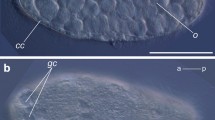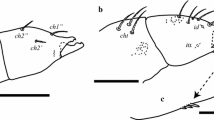Abstract
In its plesiomorphic state the insect ommatidium consists of eight retinula cells forming a fused rhabdom. It has long been observed that, in contrast to this pattern, Heteroptera have open rhabdoms. However, there has so far been no comprehensive and comparative study of heteropteran ommatidia. For this reason, we investigated the rhabdom structure in 36 species from all higher groups of Heteroptera, as well as from Coleorrhyncha and Auchenorrhyncha as outgroup representatives. In addition we surveyed the data of earlier authors, which brings the number of examined species to a total of more than 70. All examined Heteroptera do have open rhabdoms, with a system of six peripheral and two central rhabdomeres. Outgroup comparison shows that the open rhabdom is an autapomorphy of the Heteroptera. As for the rhabdom structure within the Heteroptera, we found further autapomorphic patterns in Corixidae (Nepomorpha), Gerromorpha, and Leptopodomorpha. Finally, the Cimicomorpha and Pentatomomorpha share a special pattern of the two central rhabdomeres, which we call V-pattern. This is a new synapomorphy of these two taxa.
Similar content being viewed by others
Author information
Authors and Affiliations
Additional information
Accepted: 22 November 1999
Rights and permissions
About this article
Cite this article
Fischer, C., Mahner, M. & Wachmann, E. The rhabdom structure in the ommatidia of the Heteroptera (Insecta), and its phylogenetic significance. Zoomorphology 120, 1–13 (2000). https://doi.org/10.1007/s004359900018
Issue Date:
DOI: https://doi.org/10.1007/s004359900018




